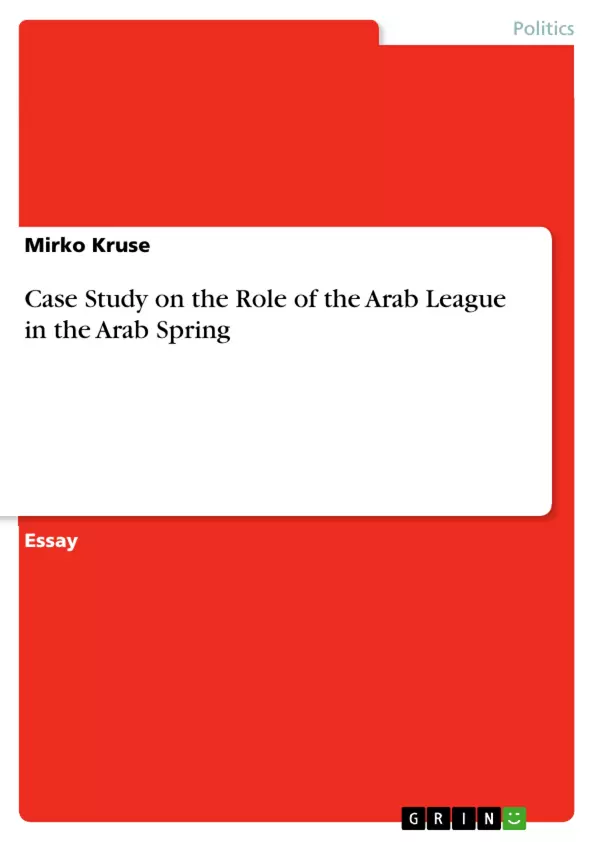The Arab League, actually the “League of Arab States” (LAS), was established in 1945 in the light of an emancipation process regarding the Arab States and the former colonialist powers, especially France and Great Britain. The functional structure is comparable to other international organisations involving a Council, a Commission and a General Secretariat. To the present day, the LAS has grown to 22 members and witnessed a major institutional evolution having established specialised agencies for purposes such as education, health or science.
Inhaltsverzeichnis (Table of Contents)
- The Arab League
- The Arab Spring
- The Arab League's behaviour in light of the Arab Spring
Zielsetzung und Themenschwerpunkte (Objectives and Key Themes)
This text aims to analyze the role of the Arab League (LAS) in the context of the Arab Spring and its impact on the organization’s performance and the future of regional cooperation in the Middle East.
- The Arab League's historical development and its role in regional security
- The Arab Spring's impact on the Arab League's behavior and its response to regional conflicts
- The Arab League's institutional weaknesses and its ability to address contemporary challenges
- The influence of key players, particularly Saudi Arabia and Qatar, on the Arab League's decision-making
- The role of Western influence and its implications for the Arab League's effectiveness
Zusammenfassung der Kapitel (Chapter Summaries)
- The Arab League: This chapter explores the historical background of the LAS, its founding principles, and its initial challenges in achieving consensus and cooperation among its members. It highlights the LAS's functional structure and its evolution over time.
- The Arab Spring: This chapter examines the factors leading to the Arab Spring uprisings and the varied reactions of Arab regimes to the popular protests. It analyses the Arab Spring's impact on the regional order and its implications for the LAS.
- The Arab League's behaviour in light of the Arab Spring: This chapter analyzes the Arab League's response to the uprisings in Tunisia, Egypt, Libya, and Syria. It investigates the LAS's departure from its traditional non-interference policy and its evolving role in conflict resolution. It also examines the impact of key players and external factors on the LAS's decisions.
Schlüsselwörter (Keywords)
The text focuses on the Arab League (LAS), the Arab Spring, regional security, regional cooperation, non-interference, conflict resolution, institutional weaknesses, key players, Saudi Arabia, Qatar, Western influence, and the Middle East.
- Arbeit zitieren
- Mirko Kruse (Autor:in), 2015, Case Study on the Role of the Arab League in the Arab Spring, München, GRIN Verlag, https://www.grin.com/document/375616



